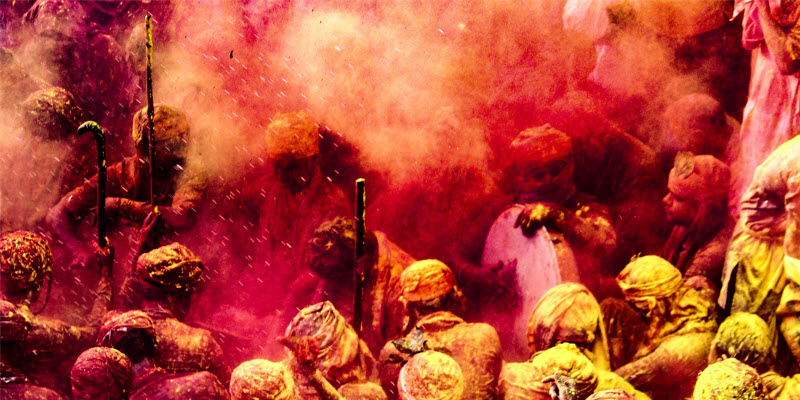2020 Colour Vision: seeing colour in a new light

Karen Haller

Every culture and civilization has wondered about it. From the earliest humans to the present day, it has fascinated and perplexed us, amazed and delighted us. We are surrounded by it in the natural world and marvel at the change of seasons for all its glorious wonder. It’s so innately a part of us that often we don’t even consciously realise that it is informing hundreds if not thousands of our daily decisions.
What we are talking about is the amazing phenomenon that is COLOUR.
It is around us all the time and influences everything we do – though we are barely aware that this is happening. In fact, we are only around 20 per cent conscious of the colour decisions that we make, though we are making them all the time: about what we wear, what we eat, what we buy, how we relax, right down to how we take our morning cup of coffee.
You only have to take a second and imagine life without colour, to imagine living in a monochrome world, and you start to get a feel for just how much we rely on colour to guide us through our daily lives and help us in our decision-making process.
If colour guides us, informs us, and influences us to such an extent, then why over the second half of the 20th century was colour seemingly relegated to the side lines of pretty decoration and at best thought of as aesthetically pleasing?
A focus on function and form
Once upon a time, colour was indeed an integral part of the design process, but then we had the WW2 and colour was relegated to the sidelines.
Ever since then, the design world has been heavily focused on function and form. And that’s understandable because that is what was needed at the time, to find the quickest, fastest way to build houses on a massive scale with products and materials that were cost-effective and easy to produce in large quantities.
It was also a time of lack and rationing, which meant that often anything that was considered frivolous and not serving a purpose was deemed superfluous and put to one side. So that would have been any kind of decoration, sensory stimulus or anything that was seen to be aesthetically pretty.
There was no time to think about how people were going to feel in these environments. The focus was on ensuring people had a roof over their head, not how they would feel in their home and whether it gave them a sense of wellbeing.
The problem is, 75 years on from the end of WW2, we are still stuck in this rut.
That singular focus on designing for function and form allows no space for our human emotional connection. It means we are delivering design without the heartbeat – without the recognition that this design is FOR a human being. You can call it sensory design, biophilic design, or designing for mental health – but what it comes down to is human-centred design. So we are stuck in a rut and we are missing a trick.
And because we are stuck in this rut we are missing a massive opportunity.
The opportunity to use design, and to use colour, to have a positive impact on the emotional, psychological and physical wellbeing of the humans who work, live and move through the spaces that we help to create.
It’s often underestimated how much power colour has to influence how we think, feel and behave. The emotional connection we have with colour, and the beauty it brings, can greatly enhance our life.
The story I use at the beginning of my book is the perfect illustration for this. I describe a moment in the Wizard of Oz film, just after Dorothy has crash landed on the Wicked Witch of the East. As she brushes herself off, picks up her little dog Toto, and then heads out her front door, she steps from sepia into a world of Technicolor.
That’s what it can be like when we mindfully and purposefully put colour into our designs.
And that emotional connection is what we are missing out on when we continue to solely focus on function and form in our architecture, branding, product design and other design spheres.
Colour is making a comeback
The last few years have been so exciting to witness because what I can see happening out there is that we are entering a whole new phase.
From a consumer perspective, there is a real thirst for colour now. People are driving more colourful cars, dying their hair more colourful hues, consumers are really embracing the opportunity to bring more colour into their lives which isn’t surprising seeing we have come out of a decade or more of living in white and grey.
Colour is an increasingly important topic of consideration for neuroscientists, biologists, physicists, philosophers and psychologists; and research is continually expanding our knowledge of how we take colour in and how we emotionally respond to it.
And in the design world,human-centred design is really coming into its own and is being seen as just as important as function and form.
Which makes me very happy because the truth is, we need BOTH of these things. We need human-centred design AND function and from to create optimal, holistic design creations. To create designs that feel alive – that have a heartbeat.
As designers, this new phase, this thirst for colour, is a wonderful opportunity for us to capitalise on the use of colour in our designs. When we are more mindful and purposeful in how we use colour, we can really influence and impact the experience that people have in a positive way. We can enhance their wellbeing, their mental health, their productivity at work, their relaxation at home, and so, so much more.
Seeing colour in a new light
Harnessing our emotional connection to colour is what this new paradigm is all about.
And this is where Applied Colour Psychology comes into its own. It helps us to understanding the psychology of colour and why we respond to it the way we do. And when we understand that, we are able to use colour to create positive states of wellbeing and to help people thrive.
And things continue to evolve! The more we use colour in design, the more we evolve how we use it to even greater effect. The more areas of society and business embrace this new paradigm, the more momentum and freedom the design world has on focusing on bringing in personality, emotional connection and psychology in our design.
And it is happening. And the best is yet to come.
Colourfully Yours,
Karen
Want to learn out more about colour?
Head over to buy The Little Book of Colour where you can find out How to Use the Psychology of Colour to Transform your Life.
If your interested in The 10 Myths that Limit You using Colour Effectively you can download that for free here.
Or if you want to learn more about Applied Colour & Design Psychology then take a look at my professional courses for the design industry over here.
Selected extracts from the Little Book of Colour
Image: Shutterstock


